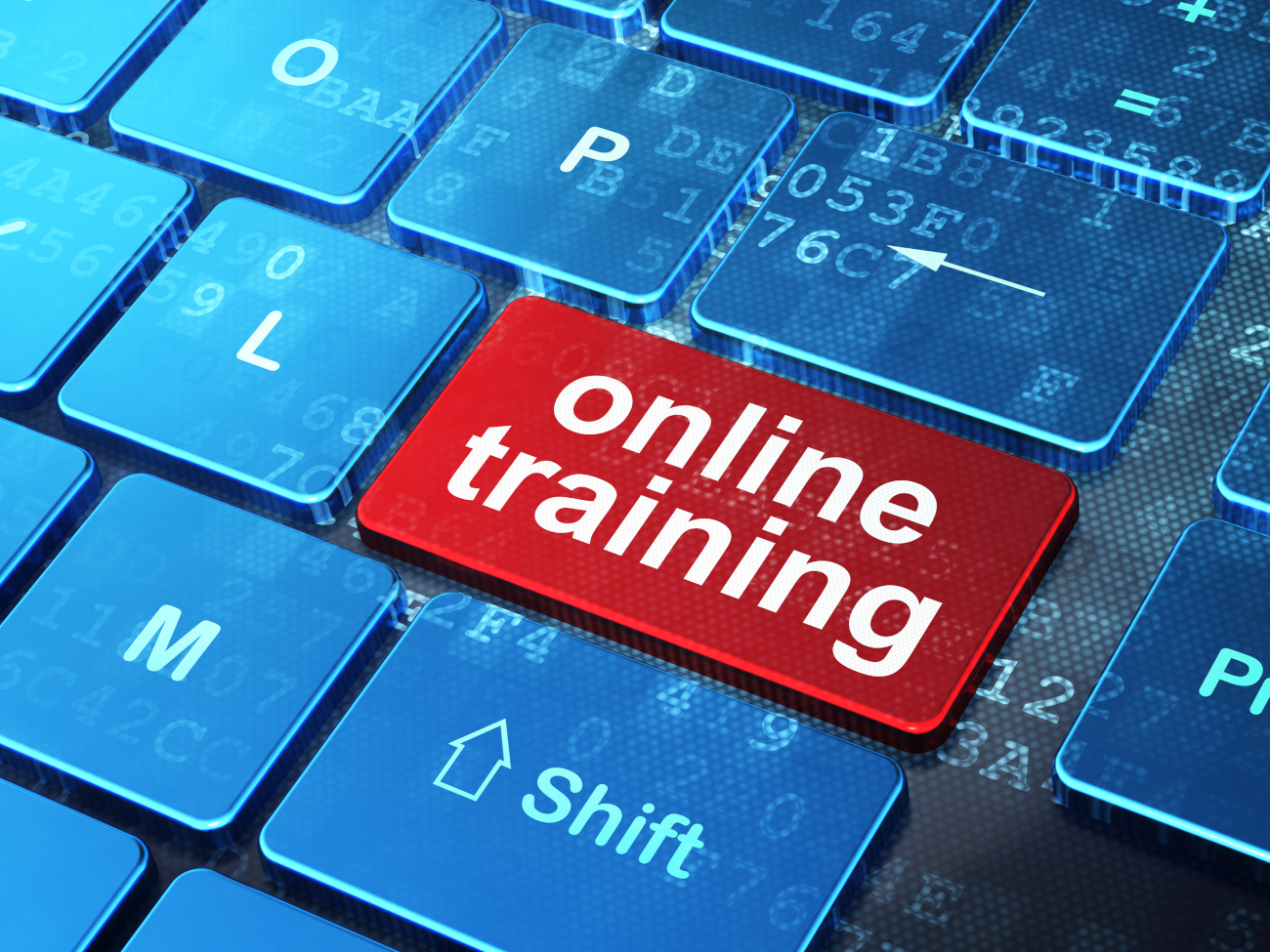It’s a new year, and a new opportunity to ramp up your online training efforts. The virtual classroom is more important now than ever before. It is not just a luxury but a necessity for many businesses. eLearning is the way forward, which is why every organization should have a plan to build a solid online training program this year.
Even if you offer online training, there’s always room for improvement. The technology continues to advance and expand. Your business needs to stay on top of it to avoid falling behind.
What makes a successful program will depend on your industry and business needs. Some organizations prefer a hybrid approach with both in-person and online classes while others lean more toward one or the other.
There is no one-size-fits-all solution. The best way to improve your online training is to learn more about methods that work and new developments in the eLearning industry.
The following list will help you begin building a stronger online training program in 2022.
Confirm the Stability and Availability of Training Technology
Your online training program will go nowhere if no one can access it. Make sure you have adequate technology available for everyone to sign into classes. If you provide laptops or tablets, make sure the necessary quantity is available and the models chosen can handle the workload.
If trainees will be using their own smartphones or computers, make sure everyone has what they need available.
The same goes for internet connections and login credentials. Can everyone access the training platform when they need to? Are there any obstacles that could prevent someone from joining a class or accessing learning material?
Consider the stability of the internet connection being used. If you have trainees who do not have a good internet connection at home, consider giving them more time to attend online training at work.
Make Sure Training Includes a Human Connection
Online training shouldn’t feel cold and lonely. You need to find ways to build a human connection to get the best results. There are several methods you can try to achieve this goal.
First, provide ways for training classes to interact. This can be through live chat, forums, and virtual class discussions. Some LMS platforms include built-in group workspaces that are great for class projects or study groups.
You should also provide a direct connection to a trainer or mentor. This should be a knowledgeable person who can provide guidance or instruction as needed. Self-guided resources like wikis and FAQs are great, but make sure your trainees have a person they can speak to as well.
Trainers should consider using icebreakers to help trainees get to know the people they will be working with during (and possibly after) the class. This can be done just like it would be during in-person training, by asking an interesting question everyone answers or playing a trivia game.
You can also take advantage of technology by asking everyone to show up to class with a virtual background related to their favorite hobby, movie, or anything they enjoy. Encourage interaction and help trainees get to know each other so that they can work comfortably as a group.
Keep It Short and Concise for Effective Learning
The best way to communicate on the internet is to keep things short and concise. The same goes for your online training programs. Walls of text will do you no favors. Too many words can become overwhelming and will not allow the brain to operate efficiently.
Instead, keep text brief, and don’t forget to work in images and other types of content. Photos, videos, and audio files convey ideas. Using multiple types of media will help trainees retain information. It also accommodates different learning styles and needs.
Present Clearly Defined Requirements, Goals, and Expectations
Have you outlined the requirements, goals, and expectations of your training program and each course within it? Trainees should go into classes with a complete understanding of what they need to do and what you expect from them. Anything less will put them at a disadvantage.
You should list overall requirements, goals, and expectations for the program. The same information should be provided for each course. This will allow trainees to prepare. It can also help them determine if they are gaining the knowledge they need or if additional instruction is required as they go.
Your corporate mission and goals should also be tied to training. For example, if your company has a goal of increasing productivity, mention this when introducing courses related to production. Trainees can see a direct correlation between the skills they are learning and how they will benefit their teams and the company.
Consider Using Augmented or Virtual Reality in Training
Augmented and virtual reality have proven beneficial in many industries. The technology is highly versatile. You can create a realistic hands-on experience without putting resources, equipment, or people at risk.
Most people are familiar with virtual reality (VR). This type of ed tech lets you build interactive environments. Augmented reality (AR) is a little different. It takes reality and adds a virtual layer to it.
Trainees can explore a real place, like a workstation, while the technology gives them greater insight. Share instructions, information, or guidance. You can also use it to pose questions or scenarios that the trainee can respond to in the real world. VR and AR can be a real game-changer for your training program.
Start Requesting Feedback from Trainees and Trainers
If you don’t already, request feedback from trainees and trainers. Your trainers can help you identify areas that could be made more efficient. The less time they waste on back-end tasks, the more time they can invest into building quality training experiences for your employees.
You should also ask about the experiences of trainees after finishing a course. They can help you discover weaknesses in your training program. If multiple people point to the same content as being confusing or difficult, then it may be time to investigate further. The content in question may need to be revamped or divided into smaller sections for easier consumption.
Feedback from your trainees and trainers is essential to program performance. This should be an ongoing process so you can identify and strengthen weak points while taking inspiration from the stronger parts of your training program.
Encourage Independent Learning with an LMS
Successful organizations often nurture a culture of learning. That means ongoing education is prioritized among the workforce. One way to encourage employees to grow their skillset is through recommendations.
Your LMS platform may include a recommendations engine to help workers discover relevant content. Some developers create advanced versions of this feature, with recommendations that learn and adapt based on user behavior. Courses are recommended based on interest, past activity, job role, or other criteria that you can choose.
Well-trained employees who continue to learn are going to be more likely to increase productivity and profits. They will cause fewer errors and will give your customer base an overall better experience. If you aren’t encouraging continued learning outside of the required training classes, then you could be falling behind the competition.
Make Your Training Videos Interactive
Training videos have been around longer than eLearning. People have used videos to teach for generations. Today’s trainers have access to even better tools that allow them to turn videos into an interactive experience.
Many LMS platforms include video-related features that keep the audience engaged. You can add overlays that pop up at the right moments to share more insight, highlights, or to pose questions. Some also allow you to incorporate questions into videos at any point. These can be used to ensure that the trainee understands the material before they finish watching the video.
Record Online Training Sessions for Later Review
Many LMS platforms have a record feature for online sessions. This tool will allow you to record the screen with audio so it can be reviewed later. You can keep this content and continue to use it for future classes. You can upload it as a requirement for a class or curriculum or save it as an extra resource for trainees who need more instruction.
Recorded sessions are also helpful for trainees who may have missed all or some of a class. This way, they get access to the same exact content as everyone else and can catch up easily.
You can monetize this content by selling it. Many online marketplaces exist that allow organizations to sell access to their training content. If you are willing to sell it, assuming it contains nothing proprietary or secret that you don’t wish to share, it can turn into another income stream.
The right learning management system will help you build a powerful training program in 2022. Get started by visiting LMS.org to read LMS reviews, articles on eLearning, and more.







